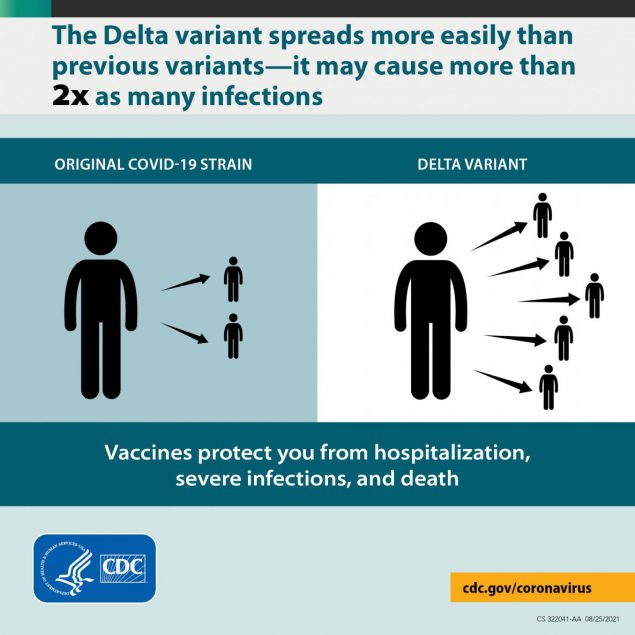An update on the Pandemic thus far
September 16, 2021
On March 11, 2020, the World Health Organization (WHO) officially declared COVID-19 a global pandemic, sending the United States and its neighboring countries into a worldwide health crisis.
The U.S. reached a deploring milestone on Sept. 15, as recent data shared by John Hopkins University shows 1 in 500 Americans has died of the coronavirus since the first detected case in the country. The university community mourns the loss of those taken too soon and takes necessary precautions to keep students, facility, and staff safe.
Artist Suzanne Brennan Firstenberg is leading the production of planting more than 660,000 white flags across 20 acres of the National Mall in Washington, D.C., to represent the number of lives lost in the U.S. to COVID-19. The ceremony, titled In America: Remember, will open on Sept. 17 and close on Oct. 3.
The Pace Press reflects on the last year and a half of successive protocols and regulations instituted to assimilate into the new normalcy of daily life.
Currently, three vaccines are being distributed in the U.S.: Pfizer-BioNTech’s and Moderna’s two-dose regimen, and Johnson & Johnson’s one-stop shot to prevent coronavirus transmission.
On Aug. 23, the Federal Drug Administration (FDA) approved the Pfizer-BioNTech vaccine for individuals 16 years of age and older, the first vaccine to surpass emergency authorization.
The emergency authorization still allows individuals 12 through the age of 15 to receive the Pfizer-BioNTech vaccine. In addition, the FDA authorizes the Moderna and Johnson & Johnson vaccine for individuals 18 years of age or older.
As vaccination protocols have gone underway, approximately 179 million Americans, 54.5 percent of the U.S. population, have been fully vaccinated as of Sept. 12. Of the 179 million, about 12 million consist of fully vaccinated NYS residents.
Although none of the vaccine options provide 100 percent immunity from the coronavirus, vaccination dramatically reduces the chances of severe illness, hospitalization, and death. However, to that effect, a vaccinated person can still contract and spread the coronavirus.
University junior Emma Brown studying Behavioral Neuroscience is fully vaccinated with the Pfizer-BioNTech vaccine. However, Brown has expressed concerns about the Pace community’s lack of awareness and accountability in maintaining health and safety protocols while on campus.
“It’s disheartening to me when I see students who are not practicing mask safety, the packed cafeteria, and those who are sick yet still come to class,” said Brown.
“I really hope Professors this semester can work with their students to make it manageable for those who do not feel well. I hope that students do not abuse this power and help those who desperately want to be in school stay in person,” she continued.
“Overall, practicing proper mask safety and utilizing sanitary precautions is a responsibility that we must have as a Pace community. This is in order to help each other and to save lives,” Brown concluded.
In January, the U.S. underwent a steady decline in positive virus cases, putting states at ease to lift mask mandates for fully vaccinated personnel in indoor public facilities.
The CDC saw a surge of new cases six months later in July as hospitalization rates rose around the country. Thus, calling on states to reinstate mask mandates and kicking vaccination protocol into high gear.
This resurgence is primarily due to the Delta variant, the most contagious variant of the coronavirus to date.
Initially detected in India, Delta is twice as infectious and is currently the predominant variant in America. According to the CDC, fully vaccinated individuals are experiencing breakthrough infections due to Delta and can still spread the virus, but for a shorter time.
To learn more about the Delta variant, click here.
The U.S. Department of Health and Human Services (HHS) announced a plan on Aug. 18 to begin offering a booster dose of only the Pfizer-BioNTech vaccine after reports of breakthrough infections.
Unfortunately, there have been delays in offering recipients of the Moderna vaccine a booster shot. In addition, there is insufficient data to support a second shot for those who received the Johnson & Johnson vaccine.
According to the New York Times, President Biden announced almost a month ago that coronavirus booster shots would be readily available for most adults in the U.S. eight months after they received their second dose.
The Biden administration initially planned to distribute the third dose by the end of September. However, recent discord inside and outside the White House has made the administration’s plan deviate. As a result, there may be restricted access to the third dose of the vaccine for older individuals and those with vulnerable or severe health conditions.
An article published in The Lancet on Sept. 13, written by two of the FDA’s top vaccine scientists, concluded that there was no credible evidence to suggest that the vaccine’s potency substantially declined over time.
The Vaccines and Related Biological Products Advisory Committee, a sub-committee of the FDA, will meet on Sept. 17 to vote on Pfizer-BioNTech’s application of the third dose for individuals 16 years of age and older.
Distribution thus remains tentative provided FDA authorization and recommendation from the CDC’s Advisory Committee on Immunization Practices (ACIP).
University senior Emma Beach, double majoring in Political Science and Women’s and Gender Studies, received the Pfizer-BioNTech vaccine as soon as it was available and said she would get a booster shot if recommended by the CDC.
“These last few years have been unbelievably tough for so many people. I believe it has really shown who cares about the safety of the community and who doesn’t,” said Beach.
“It has also shown so many flaws in our government, areas that need to be improved if we want to bring equity and justice to the United States. I will continue to listen to science to do my part to keep others and myself safe.”
On June 15, Governor Andrew Cuomo announced that COVID-19 restrictions would be lifted across all commercial settings in NYS, including retail stores, food services, offices, gyms and fitness centers, hair salons, barbershops, etc. As a result, social gathering limitations, social distancing, capacity restrictions, contact tracing, and cleaning and disinfection were optional for these establishments.
However, now that the Delta variant surges throughout the country, mandates have changed.
On Aug. 2, Mayor Bill de Blasio of New York said he wanted to increase vaccination rates rather than requiring masks. Mr. de Blasio told the New York Times he was concerned that requiring individuals to wear masks would remove the incentive for those considering getting the vaccine now.
To that end, Mr. de Blasio has instituted the “Key to NYC Pass,” which took effect on Aug. 17. The new mandate requires individuals 12 years of age and older to show proof of at least one dose of the vaccine to enter indoor dining, indoor bars, indoor fitness facilities, and indoor entertainment centers. Establishments had until Sept. 13 to comply before being penalized for violations.
To learn more about the “Key to NYC Pass,” click here.
NYC residents can present proof of vaccination by carrying a photo or photocopy of their CDC Vaccination Card, NYC Vaccination Record, through the NYC COVID Safe App (available for Android and iOS), or the Excelsior Pass app.
To learn more about proof of vaccination for indoor activities, click here.
People have been acclimating to social distancing, mask mandates, contact tracing, travel restrictions, vaccination protocols, excessive sanitation and disinfectant, and ultimate hygiene. These tactics have been used to hinder the spread of the coronavirus, but none provide a permanent solution.
As a result, it strikes some curiosity, questioning whether society will have to live synonymously with COVID-19 or if scientists will find a way to eradicate the viral infection.












